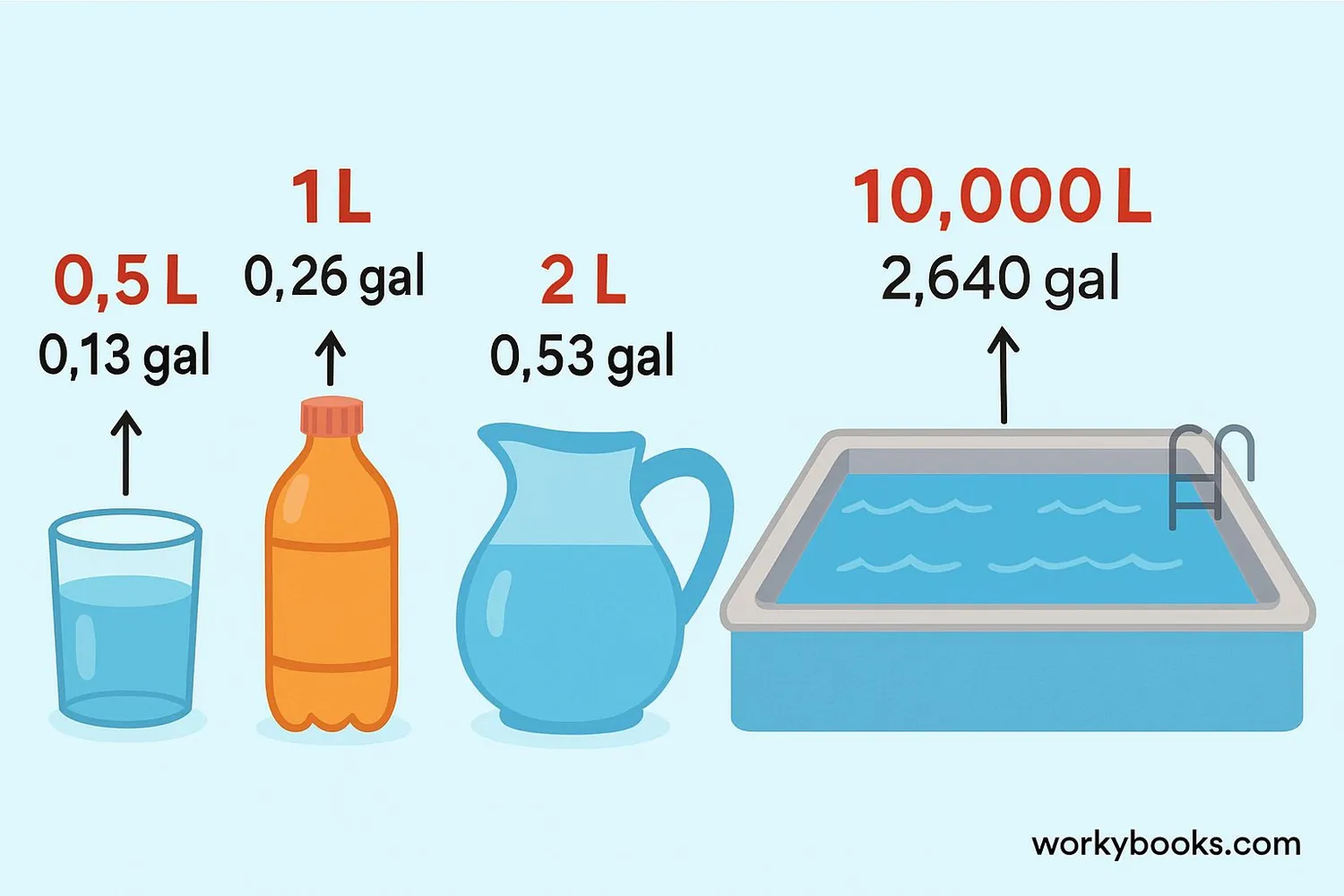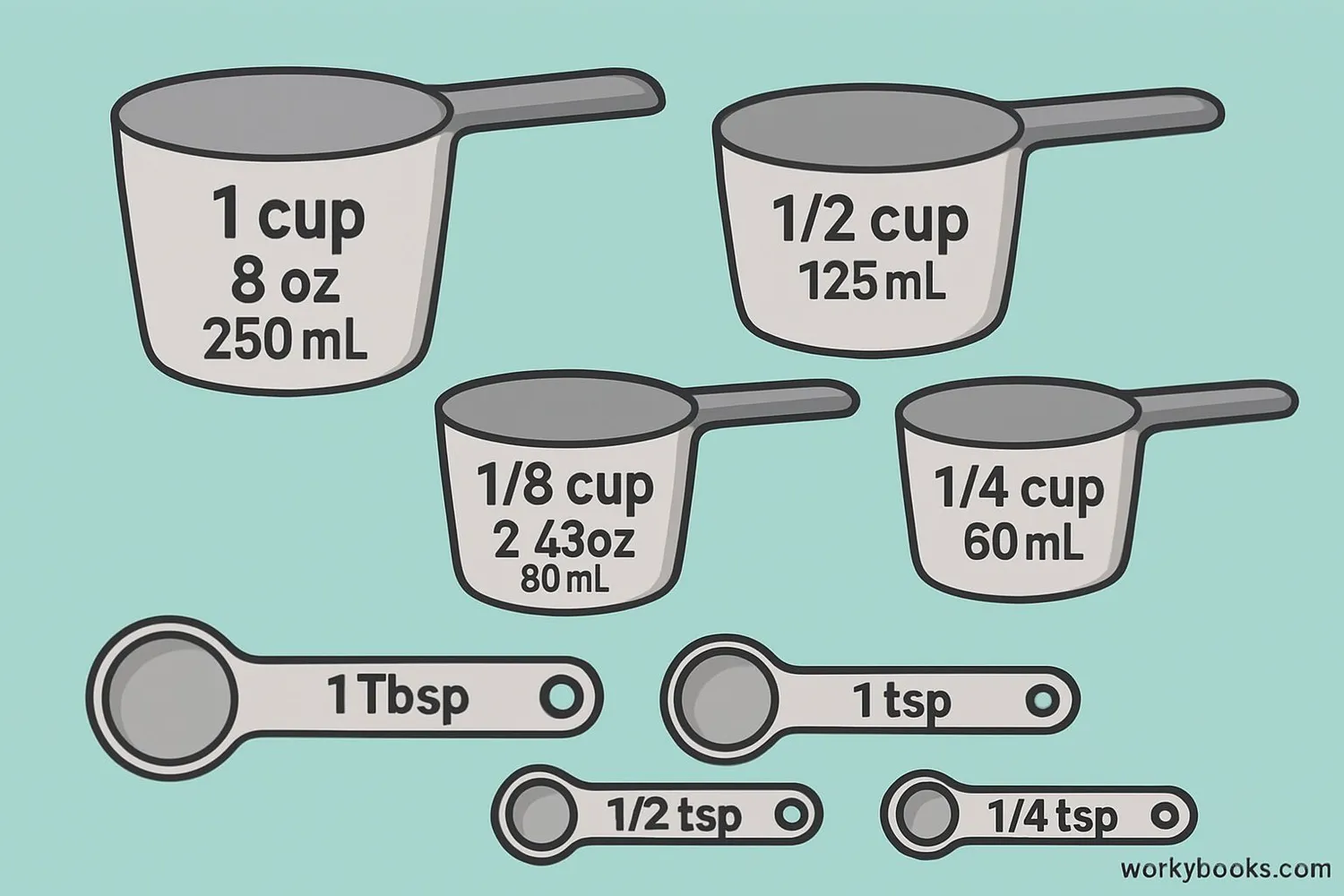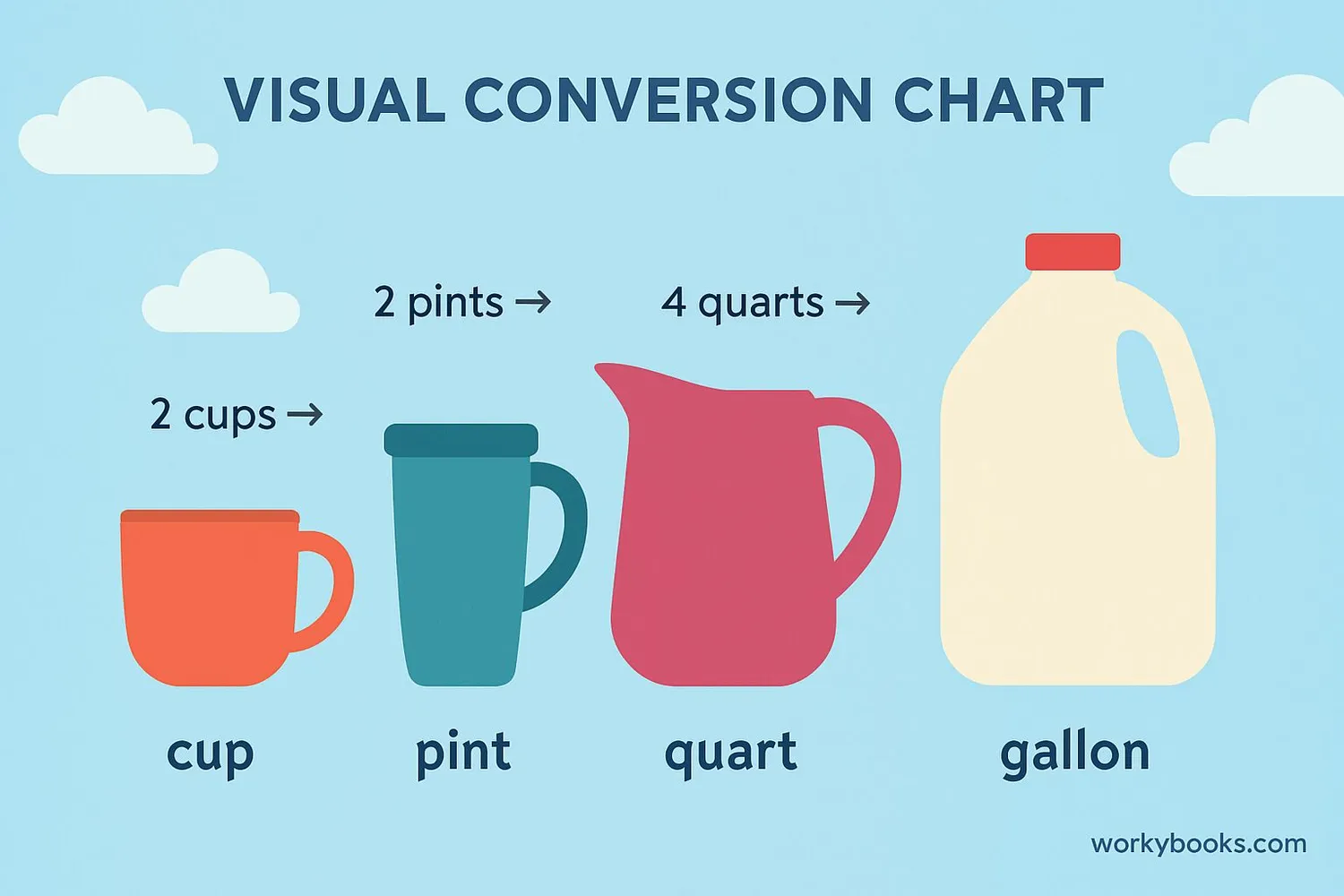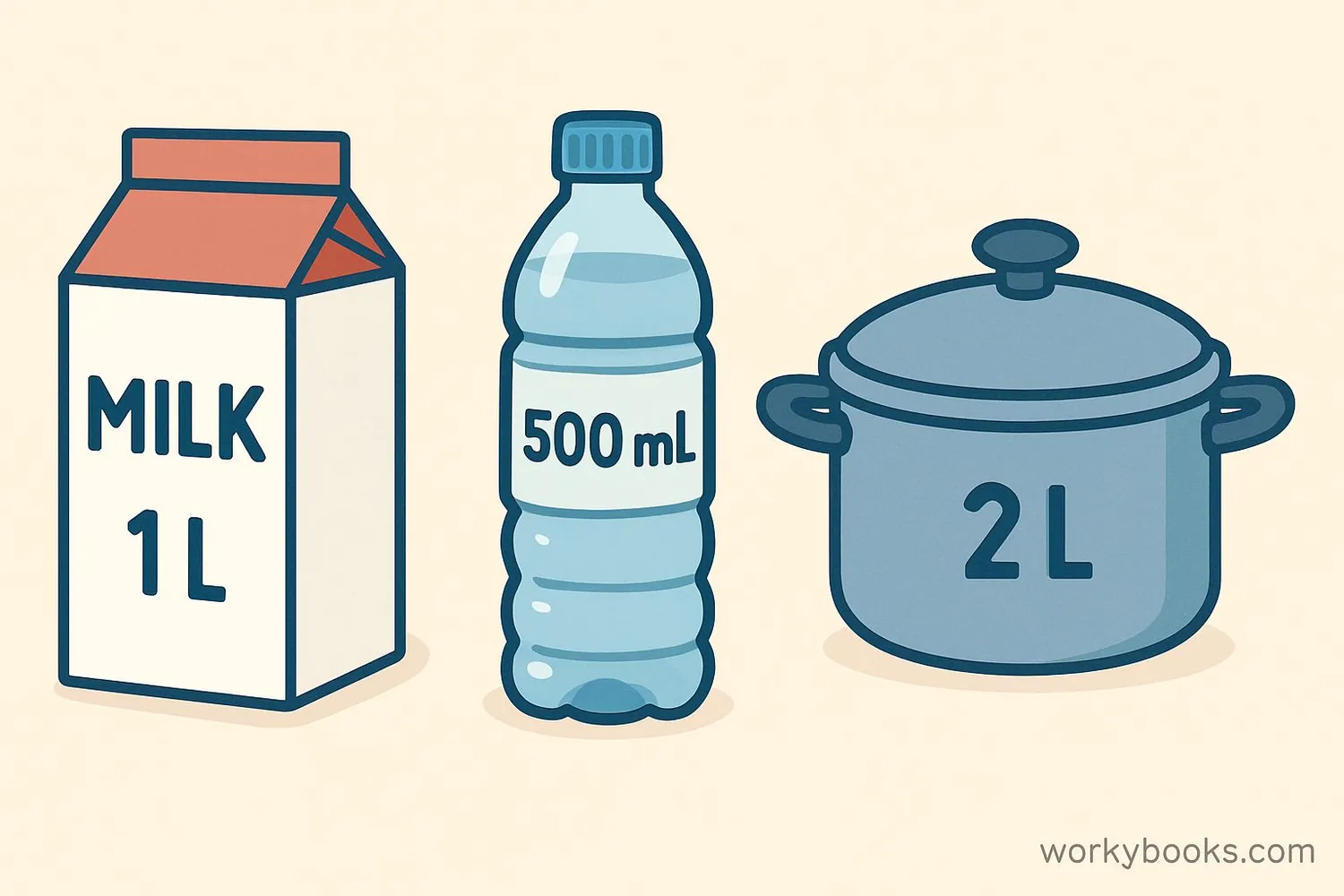Capacity Measurement - Definition, Examples, Quiz, FAQ, Trivia
Learn about volume and liquid measurement with easy explanations and practice activities
What is Capacity?

Capacity is how much a container can hold. It's the amount of space inside a container that can be filled with liquid, gas, or sometimes solid materials. We measure capacity to know how much a container can hold.
Think about these examples:
- A spoon can hold a small amount of liquid (about 5 milliliters)
- A water bottle might hold 500 milliliters
- A large jug can hold 2 liters
- A swimming pool holds thousands of liters!
Capacity is important in cooking, science experiments, and everyday activities. Understanding capacity helps us measure ingredients, fill gas tanks, and know how much liquid medicine to take.
Key Concept
Capacity measures how much space is inside a container. It's different from size or weight - it's specifically about volume.
Units of Capacity

We use different units to measure capacity depending on where we live and what we're measuring. There are two main systems:
Metric System (used worldwide):
- Milliliter (mL) - for small amounts (a teaspoon is about 5 mL)
- Liter (L) - for larger amounts (a bottle of soda is 2L)
Customary System (used in the United States):
- Teaspoon (tsp) and Tablespoon (tbsp) - for cooking
- Fluid Ounce (fl oz) - for beverages
- Cup (c) - for recipes (1 cup = 8 fl oz)
- Pint (pt) - for ice cream (1 pint = 2 cups)
- Quart (qt) - for milk (1 quart = 2 pints)
- Gallon (gal) - for large containers (1 gallon = 4 quarts)
Milliliter (mL)
1 mL = about 20 drops of water
Liter (L)
1 L = 1000 mL (about 4 cups)
Cup (c)
1 cup = 8 fl oz (about 240 mL)
Gallon (gal)
1 gallon = 16 cups (about 3.8 L)
Remember
The metric system uses multiples of 10, making conversions easier: 1 liter = 1000 milliliters
Converting Between Units

Sometimes we need to convert between different units of capacity. Here are the most important conversion facts:
Metric Conversions
To convert liters to milliliters, multiply by 1000
To convert milliliters to liters, divide by 1000
Customary Conversions
Remember this pattern: each step doubles or halves the amount
Conversion Chart
| Unit | Equals | Milliliters | Liters |
|---|---|---|---|
| 1 teaspoon | 5 mL | 5 mL | 0.005 L |
| 1 tablespoon | 3 teaspoons | 15 mL | 0.015 L |
| 1 fluid ounce | 2 tablespoons | 30 mL | 0.03 L |
| 1 cup | 8 fl oz | 240 mL | 0.24 L |
| 1 pint | 2 cups | 473 mL | 0.473 L |
| 1 quart | 2 pints | 946 mL | 0.946 L |
| 1 gallon | 4 quarts | 3785 mL | 3.785 L |
| 1 liter | 1000 mL | 1000 mL | 1 L |
Conversion Tip
To remember customary conversions: "King Gallon" has 4 queens (quarts), each queen has 2 princes/princesses (pints), each prince/princess has 2 children (cups).
Real-World Examples

Let's see how capacity works in real life:
Example 1: A recipe calls for 2 cups of milk. How many milliliters is this?
Solution: Since 1 cup = 240 mL, 2 cups = 2 × 240 = 480 mL
Example 2: A water bottle holds 500 mL. How many liters is this?
Solution: 500 mL ÷ 1000 = 0.5 liters
Example 3: A car's gas tank holds 12 gallons. How many quarts is this?
Solution: 1 gallon = 4 quarts, so 12 × 4 = 48 quarts
Example 4: A medicine dosage is 10 mL. How many teaspoons is this?
Solution: 1 teaspoon = 5 mL, so 10 ÷ 5 = 2 teaspoons
Practice converting measurements you see every day - your water bottle, milk jug, or cooking ingredients!
Practice Tip
When cooking with your family, help measure ingredients and practice converting between different units.
Capacity Quiz
Test your understanding of capacity with this 5-question quiz:
Frequently Asked Questions
Common questions about capacity measurement:
Measurement Trivia
Fun facts about capacity and measurement:
Ancient Measurements
The earliest known measurement systems date back to 3000 BC in Egypt and Mesopotamia, where units were based on body parts - like the cubit (length from elbow to fingertips).
Water Displacement
The ancient Greek scientist Archimedes discovered how to measure volume by seeing how much water an object displaces. He famously shouted "Eureka!" when he made this discovery in his bath.
Largest Container
The largest container ship in the world can carry over 24,000 shipping containers. If filled with water, it could hold about 1.5 billion liters - enough to fill 600 Olympic-sized swimming pools!
Smallest Measurement
The smallest unit of liquid measurement is the femtoliter - that's 0.000000000000001 liters! Scientists use this to measure the volume inside individual cells.





